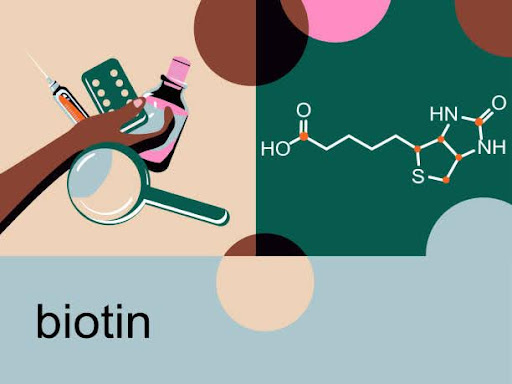Inhibitor Proton Pump: How It Works and Its Medical Applications
Proton pump inhibitors (PPIs), commonly referred to as inhibitor proton pump medications, have revolutionized the treatment of acid-related gastrointestinal disorders. They are commonly given to patients as medicine because they help relieve symptoms of GERD, peptic ulcers and Zollinger-Ellison syndrome. People find them useful because they work by stopping acid formation in the stomach. Understanding pharmacological actions, their clinical value and effects on medical therapy can help you understand modern medicine.
The Science Behind Inhibitor Proton Pump Medications

To comprehend the functionality of an inhibitor proton pump, it’s essential to first understand the role of proton pumps in the stomach. Gastric acid is completed near the end of its production by the proton pump found in parietal lining cells. The enzyme trades hydrogen ions for potassium ions which results in hydrochloric acid, necessary for healthy digestion but not good for our bodies in large amounts.
They achieve their impact by linking to and deactivating this enzyme system permanently. After the proton pump is stopped, the stomach and esophagus can take time to heal from the problems caused by gastric acid. Unlike some other treatments, PPIs can effectively control heartburn for weeks or months at a time.
The Use of Acupuncture in Healthcare and How People Benefit
One of the most common uses of inhibitor proton pump medications is in the treatment of gastroesophageal reflux disease (GERD). When stomach acid flows into the esophagus often, GERD develops and causes heartburn. By decreasing gastric acid, PPIs soothe symptoms, help the esophagus heal and stop the development of esophagitis or Barrett’s esophagus.
PPIs are used to help treat peptic ulcer disease which involves both stomach and duodenal ulcers. Such ulcers might appear if there is too much acid in the stomach, an infection with Helicobacter pylori or prolonged use of NSAIDs. In addition to helping ulcers heal, PPIs are an important addition to H. pylori therapy since they decrease the level of stomach acid which encourages the antibiotics to work better.
In conditions such as Zollinger-Ellison syndrome, where tumors cause the stomach to produce too much acid, inhibitor proton pump therapy plays a pivotal role. The pills manage excessive secretion, reduce harm to the stomach and intestines and improve the patient’s life.
Points to Think About for Long-Term Care
Although most people do well on proton pump inhibitors, long-term use is associated with several possible concerns. Over time, therapy can raise or lower the stomach acid which may affect how the body handles nutrients such as magnesium, calcium and vitamin B12. Creeping gut bacteria can become more likely if less acid is produced in the stomach which may also adjust the gut’s normal microbial balance.
There is also ongoing research into the association between long-term inhibitor proton pump use and risks like kidney disease, bone fractures, and even dementia. While final judgments are still being made, doctors usually tell patients taking PPIs to use the smallest amount and shortest treatment time needed for their condition.
Progress in the way PPI are made

The sector has advanced in designing new proton pump inhibitors that are both more effective and have better absorption characteristics. Currently, some drug types act faster than before and suppress acid for longer periods, making daily dosing easier for patients. Moreover, researchers are developing means to target the delivery of the drug to corner pockets of the digestive tract which can improve treatment results and reduce unwanted effects.
Now, patients with special requirements can take delayed-release capsules, enteric-coated tablets or orally disintegrating tablets. Thanks to these improvements, PPI drugs now deal with some issues seen in older drugs such as unpredictable results and slow symptomal relief.
Inhibitor Proton Pump vs. More forms of acid suppressants are available as well.
PPIs, unlike H2-receptor antagonists, reduce stomach acid much more and for a longer time. H2 blockers quickly reduce heartburn, yet stop working as well if you take them habitually. In contrast, inhibitor proton pump drugs do not exhibit this drawback, making them a preferred choice for long-term management of chronic acid-related conditions.
Antacids give quick but brief relief and are best used when you have mild, occasional heartburn. Because the drugs do not lower the amount of acid produced, they are less helpful when symptoms are ongoing.
Engagement in Control of Helicobacter Pylori
One of the more impactful roles of inhibitor proton pump therapy is in the eradication of Helicobacter pylori, a bacteria strongly linked to ulcers and gastric cancer. Use of PPIs and antibiotics together decreases the stomach’s acidity and provides a suitable atmosphere for the antibiotics. The accepted treatment approach uses a PPI, clarithromycin and either amoxicillin or metronidazole which is now standard everywhere.
PPIs making H. pylori treatment more successful has reduced the number of complications and hospitalizations due to ulcers.
Conclusion: The Indispensable Role of Inhibitor Proton Pump Therapy
In the modern medical landscape, inhibitor proton pump medications have emerged as a cornerstone in the treatment of acid-related gastrointestinal conditions. Since they act differently than most drugs, last a long time and are useful for many disorders, they are highly valued by both medical experts and patients. Careful consideration of the long-term risks is useful, since PPIs when prescribed appropriately can ease symptoms, assist in healing and positively influence patient results.
As research continues to enhance the safety and efficacy of these drugs, the future of inhibitor proton pump therapy looks promising. As these medications play a bigger part in specialized GI care and develop new formulations, they are expected to stay important in treatment for the long haul.









